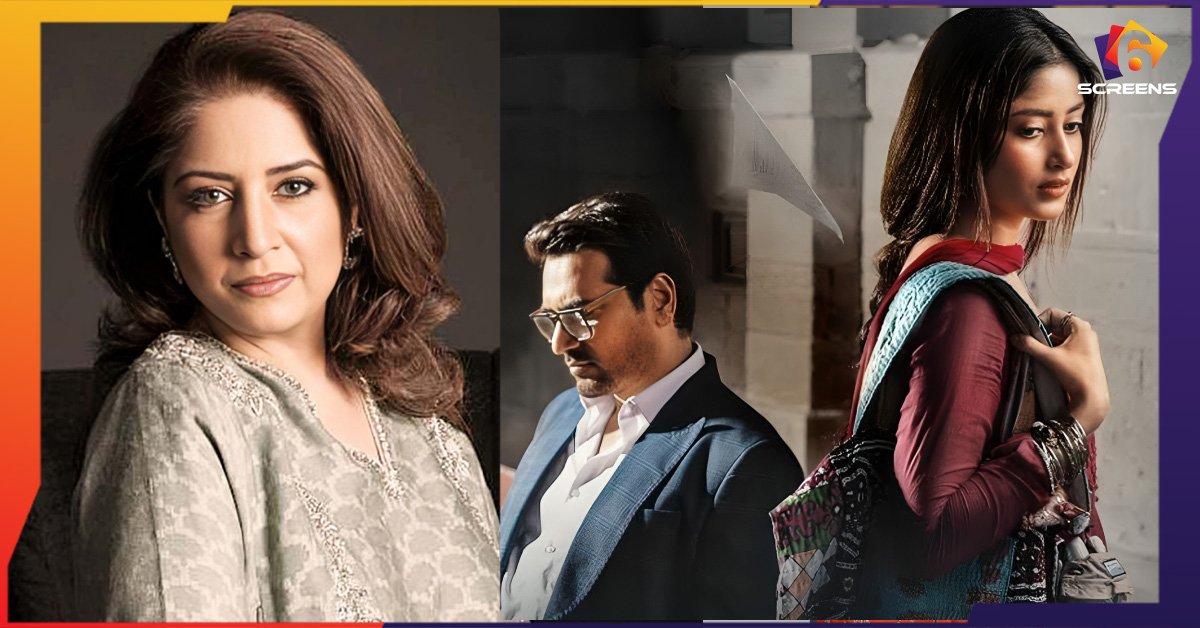
Atiqa Odho’s Bold Review of Main Manto Nahi Hoon: Stirring Discourse and Highlighting the Drama Critique
After nearly 30 years of professional work, the veteran actress and critics’ favorite Atiqa Odho is back in the limelight as she offers a particularly strong review of one of Pakistan’s most hyped dramas, Main Manto Nahi Hoon.
The details of Odho’s remarks are not yet public, but there is enough noise swirling around her review to suggest that she was frank and—deliberately—controversial.

Atiqa Odho, in her media landscape, is a fearless critic
Since the early 1990s, Odho’s work has featured in some impactful dramas, such as Sitara Aur Mehrunissa, Dasht, Nijaat, Humsafar, and Pyar Ke Sadqay. Her film credits also feature, for example, Jo Darr Gya Woh Marr Gya and Mujhe Chand Chahiye.
In addition to her accomplishments, she has gained a reputation as a recurring voice on the drama review show Kya Drama Hai (24 News HD), wherein her perception on trends in the industry and who tells what worthwhile story sometimes leaves little to the imagination and certainly no criticism unaddressed.
Main Manto Nahi Hoon: A Drama Scrutinized
Based on scarce but available references, Main Manto Nahi Hoon looks to be a massive project directed by eminent director Nadeem Baig and written by Khalil ur Rehman Qamar [KRQ] and a multifaceted cast.
Its talent notwithstanding, the drama has already received a critique for some problematic elements, including the fat-shaming dialogue and concerning power dynamics like teacher-student interactions.
As is already known, KRQ’s controversial past reputation is characterized by controversy and unabashed dialogue; the drama is not unfamiliar with raised eyebrows and intense public reaction.
What did Odho’s “Savage Criticism” mean?
Odho’s criticism spoke to ethical concerns: perhaps she made a point about problematic relationship tropes or media sensationalism. The main reason for her criticism was to point out the unethical relationship between a teacher and a student.
Narrative Issues: KRQ’s dramatic writing tendencies might have contradicted expectations of professing gradual storytelling.
Social impact: As an established and respected voice in the industry, she could have challenged the show’s representation of motivations or ramifications on society’s attitudes.
Her readiness to step up and speak out in this way is consistent with a history of bold criticisms—for example, decrying that forced or arranged marriages are psychologically debilitating and confronting industry complacency regarding conflicts and artistic echo chambers.

Public Audience and Industry Reactions
Reactions to Atiqa’s critiques are frequently polarized. For example, her referencing arranged marriage prompted both praise for confronting intercultural norms and rejection for perceived liberal bias. Similarly, her remarks regarding actors being dubbed “ambassadors of love,” divorced of conflict, got serious pushback from her colleagues, as implied aimlessness was viewed as an absence of solidarity or responsibility.
I won’t be surprised if her Main Manto Nahi Hoon comments evoked a similar mixed bag of responses from audiences—some may applaud that she is calling it how it is, while others claim that she is undermining star power or transgressing popular narratives.
Atiqa’s criticism also reflects a bigger dynamic—what can be described as the role of established artists acting as critics and consciences of the industry. As the culture of social media means that journalists and artists shape the social conversation, as well as an expectation that much more thoughtful, respectful, and meaningful storytelling should be the norm in our discourse, voices like hers are promoting storytelling that resembles that.
It is one thing to critique forced tropes about marriage or unpack unhealthy, contested themes of dramas, but her comments signal an emerging expectation that creators, artists, and reviewers must wrestle with the moral dimensions of their work.

